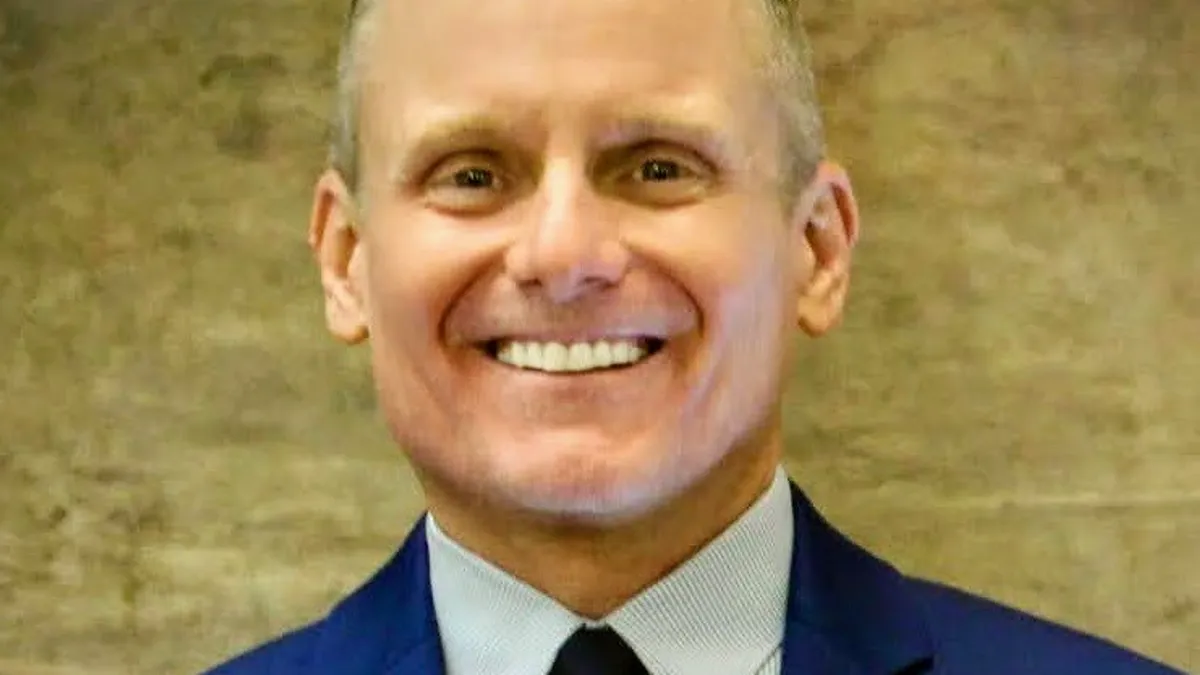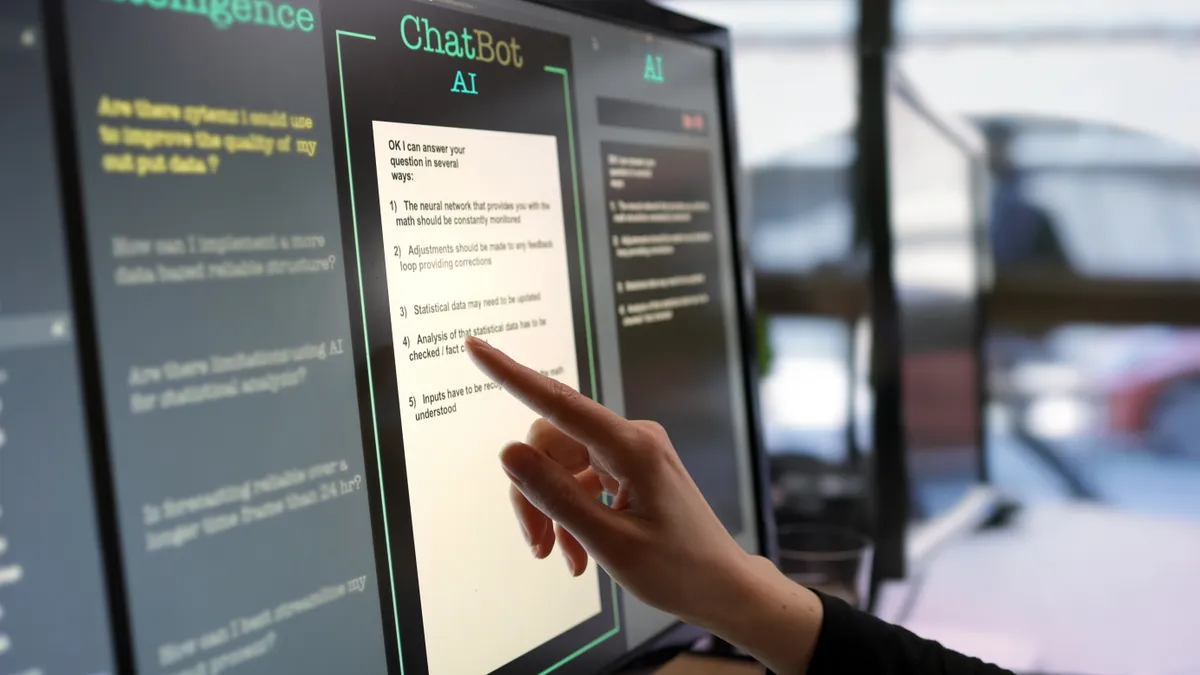Located in the Phoenix Metro Area and experiencing explosive growth, Buckeye Elementary School District, a K-8 district with more than 5,500 students, hasn't stalled on preparing for an even larger population in coming years despite the coronavirus pandemic.
Among the silver linings during a tumultuous time: The district is building a new elementary school, the first to be named for late Arizona Sen. John McCain — and McCain's family has had some direct input. The planned C-STEM (Communications, Science, Technology, Engineering and Math) school is slated to open in fall 2021, with construction expected to begin "as soon as humanly possible."
"That's been a real highlight in spite of all the drama this past year," said Mike Lee, assistant superintendent for academic programs and professional learning.
Education Dive recently caught up with Lee to learn more about the new school, as well as how the district adjusted to coronavirus and the lessons it's applying as schools reopen.
EDUCATION DIVE: With the new school, will the relationship with the McCain family also offer curricular benefits for students?
MIKE LEE: The stages we've been in to this point have been primarily around the overall vision for the school, both instructionally and physically — the design and layout and spirit of the school. That’s something Cindy’s met with us a couple of times and has been really pleased about.
One of the things the architecture firm we're working with did a really great job of is really fleshing out from our stakeholder groups what does John McCain mean to people — beyond the superficial political thing, but as somebody who's just identifiable with Arizona. In a state that doesn't have a long history compared to a lot of other states, he’s one of those kind of Mount Rushmore figures in terms of public life.
So we found very common themes that came up … symbols and emblems of kind of what he stood for. Things like collaboration and innovation and reaching across aisles and divides; trying to be honest and accepting responsibility; [and] service. That’s exactly what came out of our stakeholders. So those things have all been, right down to the design of the school, laid as a foundation.
And now we'll start to move into more of the actual curriculum. We're in this space where we plan on doing things like … capstone experiences for kids at particular grade levels. [And] those capstone experiences might be themed to things related to these universal attributes people can kind of center around, like service.
We haven't gotten into the details of this, but [Superintendent Kristi Wilson] is really coming with a very strong belief this school needs to be really cutting edge, and she wants to tie in that the details of that will emerge as we work with the actual people who are going to be doing instruction in school.
The thing you figure out pretty quickly is kids can learn so much better when things are connected to a broader schema, an infrastructure of ideas or concepts, things that are tangible. So instead of having obscure ideas about wind resistance taught that may never affect us, you can lead back to these stories that are cross-curricular about Navy jets or you name it.
Cindy McCain [tne senator's wife] was an educator, and we really get the sense she's looking forward to being even more involved in some of those conversations.
How are you applying the lessons learned in spring to the new school year?
LEE: We were developing probably five major plans for reopening, all with major logistical concerns. Some of it would maybe work on paper, but if the state didn't sign off on a particular type of financial waiver, you wouldn't be able to do it anyway because the student wouldn't count in your funding formula.
Then you have that interplay between, say, special education federal law, IDEA. The governor or the U.S. Department of Education might say "Just do the best you can for these children.” But the reality is that does not inoculate you from the lawsuit from an IDEA violation.
You might get contradictory information from really well-intentioned people, working hard and trying to give you flexibility, and in spite of their intention, there isn't really flexibility. I'm not here to be critical, as I can only imagine what it's like to have that responsibility. But to the people on the ground, it really felt like we didn't really have an idea of what was going to be coming. So we planned, [and] we estimated. “If this happens, then here's something we could do. What model can we design that could expand or contract, depending on what we're told?”
We opened so early in Arizona — the first week of August is when most schools opened. The national timeline for conversations that were going on were a month behind.
We basically were very concerned about the health of our teachers and kids. In the end, we can make up for deficiencies, [but] what we can't make up for is a critical mistake when it comes to taking an unnecessary risk with a child's life or a teacher's life. What we did is give ourselves kind of a tentative date of, “Let's look at [the fact] there's a good possibility we're probably going to do a chunk or the entire first quarter online. Let’s try to do it really, really well.” And then communicate that with our families.
As we started this week, the feedback we've already been getting from the community has been really positive about the difference between last spring. And they don't say that with criticism — we did not get a great deal of complaints from our community.
We went ahead and opened a virtual school. We condensed what would normally be a one-year process to apply and created an application and designed a school.
What we gave our parents in that school was a promise you're not going to find yourself forced back into a building. If they're afraid and they don't want to put their kids in your school, it doesn't matter what the governor says. They'll go someplace else. They’ll homeschool their kids.Two-thirds of our community in the summer, when we surveyed them, identified as extremely concerned or concerned about safety.
We also developed what we call BESD Flex, but it's not really a program. I'm just going to make up a date here, but let's say around Oct. 1, the health metrics allow it and we’re able to reopen. What parents are going to have the option to do is ... be able to go quarter-by-quarter and stay in the virtual classroom, keep learning in that way, and then come back at the end of the next quarter. And they can stretch that out for as many courses as they want for the remainder of the year.
I say that not knowing what the rest of the year is going to bring us, and that creates all kinds of logistical issues on our end. It's going to take some real creative leadership at the sites to navigate how you place kids in classrooms and how you do this.
What are some of the ways that you're approaching assessment this year?
LEE: That's still something we're kind of knee-deep in. For example, for state assessment, we haven't gotten any updated guidance on whether the state has plans to apply for waivers or anything for high-stakes testing. One of our frustrations internally, from a curriculum and instruction standpoint, is we don't have good new data. We're operating on old data, from before the time the kids went home. So the way we're really approaching assessment is we're still going to be using, for example, our reading assessments we've used before — the research based [models like] DIBELS — in the technology platform where we can.
As you’re probably more than well aware of, there are issues in terms of reliability, test security and those kinds of things. You can't necessarily pull off the same kind of assessment for learning, the summative assessments, as well or as officially as you could before. What we do have good ability to do is more formative stuff, assessment to help plot what's next. That's what we focused on with our teachers. So how can you more effectively figure out where a student is so you can figure out what to do next? You can do that virtually.
I can schedule a one-on-one with you for five minutes as a teacher and ask you a series of questions face-to-face, and I don't need to worry about your reliability. If they're directly linked to my standards, I can get a sense of where you are. Or I can do that in a small group.
We really see great opportunity to do more formative assessment work that will shape our instruction. Depending on what happens and how soon we get back into the classroom, that will shape some of what we're able to do after that, including what spring testing will look like.
There will be all kinds of metric questions about comparing school years to school years and schools to schools. That's a debate I'm sure is gonna take center stage in the not-too-distant future, once we clear that hurdle of when does everybody get to come back.























